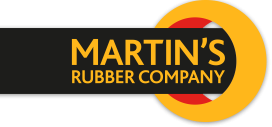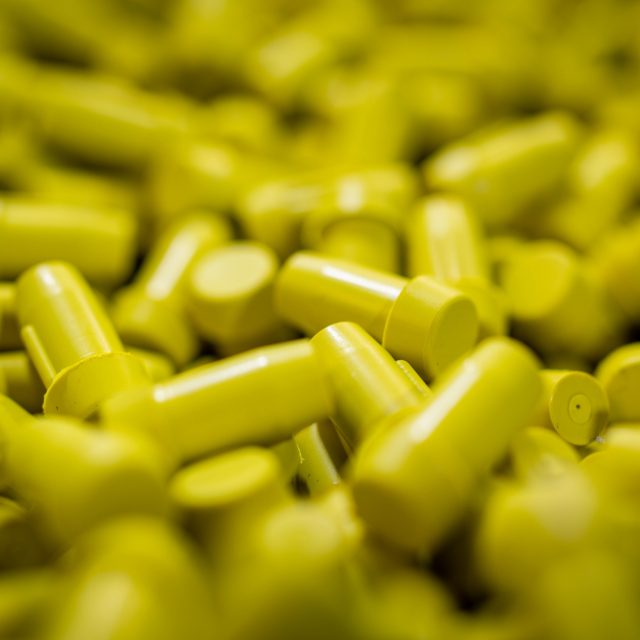




Envirolast is a unique range of rubber compounds containing up to 50% recycled material.
We offer Envirolast materials wherever possible in order to play our part in reducing waste and, collectively, our environmental footprint.
We recycle our rubber products not just once, but indefinitely; the items that have been manufactured from Envirolast materials can, in turn, be returned to our Remould™ process. In this way, a truly complete recycling loop is achieved.
We believe that incorporating unwanted and end-of-life products into brand new moulded items is a step towards making our planet a better place, and below we set out some of the challenges we have encountered in getting to that point.

The key difference between a thermoplastic and a thermoset material is inherent in the contrasting nature of their molecular structures.
Despite many attempts over the years to discover methods of breaking down these bonds and returning the rubber compound to its pre-vulcanised un-crosslinked state to allow it to be remoulded into a new product or shape have largely failed, defeated by the inherent strength of the chemistry involved. Some processes have delivered limited success but were unable to deliver suitable scale, other processes simply destroyed the rubber completely.
Thermoplastics have molecular chains that associate themselves with each other in both amorphous and crystalline states, but which essentially rely on intermolecular forces to provide solidity to the structure. Heating such a material weakens those intermolecular forces and allows the material to deform or even flow in a plastic way, and once cooled, re-solidify into whatever the current form of the material is. This remarkable property makes these materials immensely useful across a vast range of products, and also allows for reprocessing at the end of life of a given product, so that the material can be reshaped into a new, or different product.
Thermoset materials (rubber) have a very different molecular structure to thermoplastics, in that covalent bonds or “crosslinks” between molecules are established during a curing process, typically called vulcanisation in the rubber industry, and these bonds are “set” permanently by their very nature. The macromolecule, or lattice-like, structure of these molecular crosslinks are what gives thermoset rubber its unique elastomeric property – the ability to flex and stretch yet return to its original shape as the strength of the lattice structure overcomes any deforming forces once they are removed.

In collaboration with other industrial, research and academia partners, we have developed a successful, scalable proprietary process named Remould™. This unique process overcomes the traditional problems encountered in previous attempts to recycle rubber, and is able to continuously produce, from end of life rubber products, a material that is de-vulcanised, and can be re-vulcanised back into fresh products when correctly compounded for new processing.
Our process takes items or rubber material that has been segregated by polymer type (e.g. nitrile, neoprene, natural rubber) and works with each grade of rubber separately.
Stage 1: The initial part of the process is to grind down the disparate shapes of product that have been collated for processing. This leaves us with a clean, consistent rubber crumb material of the selected polymer type ready for the next stage of processing. At this stage the rubber is still fully vulcanised, with all its crosslinks intact, and cannot really be said to have been truly recycled.
Stage 2: This material then enters the next stage of processing where it is carefully blended with added chemical “bullets”, which facilitate the disconnecting of the crosslinks of the cured rubber material during the following stage of the process.
Stage 3: In order to activate those chemical bullets and break down the crosslinks in the rubber, in a similar way to the original compounding and vulcanising process, a degree of mastication, temperature and pressure is required to put controlled energy into the cured rubber, gradually disconnecting the crosslinking of its molecular structure. Using specially developed machinery that runs in a continuous process and allows for the injection of supercritical CO₂, the required chemical changes are delivered, turning the rubber crumb into a fine, friable material that once again exhibits fully reactive sites for new C-S bonds. These bond sites can be accessed by a fresh cure system package when such Remould™ processed material is re-compounded into new material for moulding into new products.
Stage 4: The material that has been through the Remould™ process is mixed in with virgin compounds of the same polymer type, ready for moulding into brand new products.
In this way, our Remould process has de-vulcanised the original thermoset rubber back into a state whereby it can be incorporated fully into a new formulation of rubber compound, and fully crosslinked as part of the vulcanisation of that compound into a new, finished and functional product.

Know exactly what you want? Upload your drawings so we can provide a tailored solution
Get in touch with us today by email [email protected]